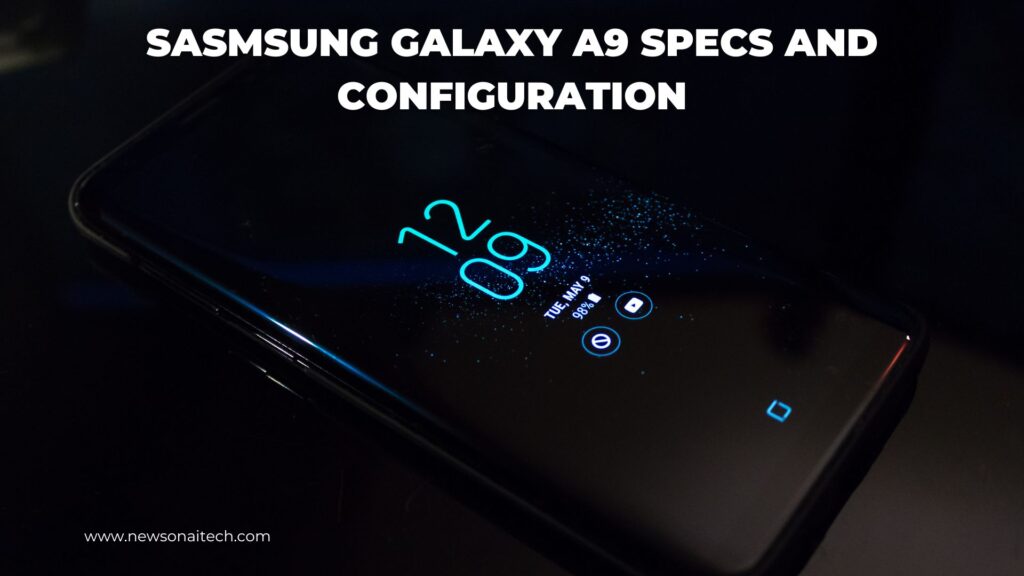
15 Best Laptops for Engineering Students in July 2025
- Laptop & PCs

The Samsung Galaxy A9 (2018) made a significant splash in the competitive smartphone market as the world’s first smartphone to feature a quad-camera setup on its rear. This comprehensive review will dissect the Galaxy A9 (2018) and determine if its performance, features, and overall value hold up in the current landscape.
We’ll explore its Qualcomm Snapdragon 660 processor and the capabilities of its four distinct camera lenses. Beyond the camera, we’ll examine the display’s quality, the software experience, and the phone’s battery life.
By comparing it against the expectations of today’s smartphone users, we will provide a definitive verdict on whether this once-innovative device is still a worthy consideration.
The Samsung Galaxy A9 (2018) was designed to offer a versatile mobile photography experience, standing out with its unique four-camera system. It was powered by a Qualcomm Snapdragon 660 processor, paired with either 6GB or 8GB of RAM, aiming to deliver smooth performance for everyday tasks and some gaming.
Its design is a product of its time, featuring a glass back and a metal frame, with a rear-mounted fingerprint sensor. The phone boasts a large 6.3-inch Super AMOLED display, offering vibrant colors and deep blacks.
While its main selling point was its camera versatility, the overall performance was considered mid-range at the time of its release.

| Specs | Details |
| Processor | Qualcomm Snapdragon 660 |
| Graphics | Adreno 512 |
| Memory | 6GB or 8GB RAM |
| Display Size | 6.3 inches |
| Resolution | 1080 x 2220 pixels |
| Refresh Rate | 60Hz |
| Brightness | Up to 560 nits |
| Storage | 128GB, expandable via microSD |
| Battery | 3800mAh |
| Weight | 183g |
| OS | Android 8.0 (Oreo), upgradable to Android 10 |
The Samsung Galaxy A9 (2018) presented a mix of innovative features and some limitations that are important to consider from a modern perspective.
Pros:
Cons:
The Samsung Galaxy A9 (2018) features a design typical of late 2010s smartphones, with a glass back and a metal frame that gives it a premium feel. It was available in striking colors like “Bubblegum Pink” and “Lemonade Blue,” in addition to the classic “Caviar Black”.
The build quality is generally solid, though some reviews noted that the fingerprint reader could feel slightly loose. The phone’s dimensions and weight are reasonable for its screen size, and the inclusion of a USB-C port and a 3.5mm headphone jack were welcome features.
The Galaxy A9 (2018)’s design, with its vertically stacked quad-camera array, is certainly a conversation starter. While the glass back is prone to fingerprints, it contributes to a more premium look and feel compared to the plastic backs of many contemporary mid-range phones. The rear-mounted fingerprint scanner is placed in a conventional and easily accessible position.
The 6.3-inch Full HD+ Super AMOLED display on the Galaxy A9 (2018) was one of its strong points. With a resolution of 1080 x 2220 pixels, it delivers sharp and vibrant visuals, a hallmark of Samsung’s display technology. While it doesn’t have the high refresh rates of modern phones, it remains a pleasant screen for media consumption.
At the core of the Galaxy A9 (2018) is the Qualcomm Snapdragon 660 chipset, an octa-core processor that was respectable for the mid-range market at the time.
Paired with a generous 6GB or 8GB of RAM, it handled daily tasks and multitasking reasonably well. However, for demanding games and applications, its performance fell short of flagship devices.
The headline feature of the Galaxy A9 (2018) was undoubtedly its quad-camera system. The setup included a 24MP main sensor, an 8MP ultra-wide lens, a 10MP telephoto lens with 2x optical zoom, and a 5MP depth sensor for bokeh effects.
While the versatility was praised, the actual image quality was inconsistent. The main camera performed decently in good lighting, but the secondary lenses often produced underwhelming results.
In 2025, the Samsung Galaxy A9 (2018) faces a vastly different competitive landscape. Modern budget and mid-range smartphones often offer superior performance, better camera quality with fewer lenses, and more up-to-date software with guaranteed future updates.
The Samsung Galaxy A9 (2018) was a pioneering device that pushed the boundaries of mobile photography with its quad-camera setup.
While its display remains vibrant and it offers some convenient features like a headphone jack and expandable storage, its performance and camera quality are decidedly dated by today’s standards.
For a user seeking a reliable and modern smartphone experience, the Galaxy A9 (2018) is difficult to recommend in 2025.
Its outdated software, mid-range performance, and inconsistent camera system are significant drawbacks. However, for a collector or someone looking for a secondary device with a unique piece of smartphone history, it could hold some nostalgic value.
